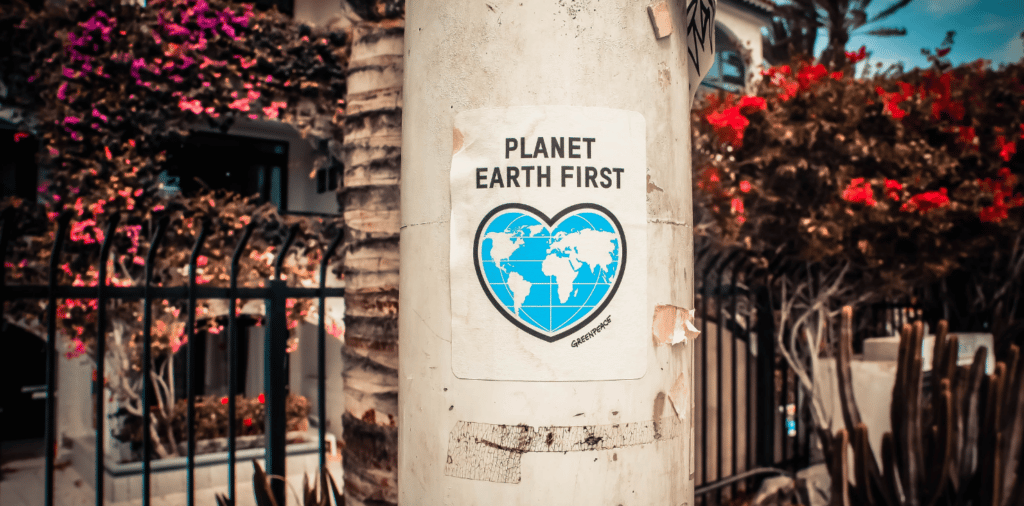What is Sustainable Leadership? 4 Qualities of Forward-Thinking Leaders

To address growing climate concerns, many of the world’s top organizations have announced long-term sustainability goals to mitigate the challenges future generations will face. However, the steps required to achieve these lofty goals remain dangerously uncertain. Sustainability is a large and ever-shifting issue, much too complex to be passed off to a Chief Sustainability Officer and forgotten. Many of the problems organizations will face require the combined efforts of leaders from multiple disciplines to shift culture, shape long-term solutions and think dynamically. Top executives, therefore, must develop new skills and competencies to advance sustainable development in their industries. What might a leader in sustainability look like in practice?
What is Sustainable Leadership?
Sustainable Leadership is a type of leadership that drives solutions for environmental, social and economic challenges in the world. It recognizes leadership as a process of influence and breaks down silos to combine efforts towards change and transformation. Sustainable leaders understand and embrace growing complexity, becoming more adaptable as a result. Most importantly, these are thought-leaders who see business as deeply interwoven with people and the environment, not as individual entities. Driven by their strong values, they make bold moves that focus on the impact of the organization on the next three generations, rather than the next quarter. With these skills embedded in their management style, sustainable leaders prepare the organization to flourish and expand long into the future.
Why is Sustainable Leadership Important?
A future-proof business model
Leaders that measure success near-exclusively on ROI are unlikely to adapt well to the present climate realities. According to the Value Reporting Foundation, about 68 of 77 industries are already adversely impacted by climate change. Environmental disasters will continue to disrupt global supply chains, barring access to energy and food. Taking a multi-faceted approach to combat the impact of climate change ensures that the business has survivability.
Attracts employees, consumers and investors
Top talent and consumers alike are increasingly drawn to organizations that value sustainability, leaving behind organizations who don’t take purposeful action. By creating sustainable development goals, sustainable leaders can help organizations draw in and retain new consumers, stakeholders, as well as reach out to hire new talent to support the company’s progression.
Responsible leadership builds a better future
Most important of all, sustainability is a human issue, and the preservation of the world is an investment in a better future for everyone. By developing decision-makers with the qualities sustainable leaders share, organizations will create new sustainability strategies that support the interconnected systems of business, humanity, and the global environment.
4 Qualities of Sustainable Leaders:
While there are many areas of development for sustainability leaders, we’ve determined four main qualities of sustainable leaders today.
1. Sustainable Leaders Are “Spiky” Individuals
Because sustainability is a complex topic that touches a variety of fields, leaders may, at times, feel pressured to know it all or sacrifice specialization to build teams of well-rounded individuals. However, leaders and their teams are more effective when composed of t-shaped, or “spiky,” individuals who have a broad base-level knowledge on many topics with one or two strong pillars of expertise. When areas of specialization vary on the team, the group becomes stronger than they would be as individual jacks-of-all-trades.
Beyond internal teams, sustainable leaders also need to extend across sectors to achieve long-term sustainability goals. This might involve engaging ecosystems with specialties beyond the organization’s – even at times collaborating with peers and competitors. The value of cross-boundary networks is well understood by sustainable leaders, facilitating far-reaching projects that disrupt the status quo.
2. Sustainable Leaders Are Adaptive Leaders
For decision-makers to navigate the constant change in the world’s social, environmental and economic challenges, they must also manage their own personal growth and leadership development. This includes determining which mindsets, tools and frameworks are most applicable to their present needs and incorporating them accordingly. Adopting a growth mindset is a key aspect of adaptability, as letting go of old practices allowing life-long learning to occur. Additionally, addressing complexity through adaptability also means embracing a fair amount of uncertainty. A willingness to try new approaches, quickly switch courses, when necessary, embrace failure and empathetically encourage your team to do the same are all necessary components of adaptive leadership. Once this style of working is embedded in the organizational culture, innovative solutions can flourish and better address the climate challenges of today and tomorrow.
3. Sustainable Leaders Have Influence, Not Just Authority
When working across disciplines, leaders must bring multiple stakeholders – many of whom they have no direct authority over – into alignment on sustainability goals. While this can feel like a major roadblock to success, sustainable leaders thrive in this environment once they realize the power of personal influence. Rather than exerting authority over others using rank or position, change-makers must utilize their credibility, passion and values as thought-leaders to inspire others to follow. Influence is built by increasing aspects of personal power like living authentically, leveraging relationships and sharing industry knowledge. Inspiring others with personal integrity creates trust, which, in turn, increases willingness to work towards shared sustainability goals and catalyze change.
4. Sustainable Leaders Have a Long-Term Perspective
Many senior executives rely heavily on the simplified metrics of Return of Investment (ROI) because exact numbers are more easily linked to net positive impact. Sustainability initiatives, on the other hand, are often too complex to show a clean-cut financial correlation in the short term. Sustainability leaders must recognize climate change’s long-term impact and adopt a more robust perspective on data assessment. Doing so increases the organization’s survivability and benefits the future of the entire world.
Sustainable Leaders must also embrace their own worldview. Most aren’t interested in environmental action because it is trendy – they often see themselves as integral pieces of the global ecosystem and believe that it is their duty to become better caretakers for the world and its inhabitants. Connecting a personal perspective with the shared values of the organization allows executives to boldly lead their team towards long-term sustainability goals and overcome short-term challenges with confidence.
- Read More: Take Our Growth Mindset Quiz
Sustainable Leadership Practices
Here’s what leaders can do to help their businesses become more sustainable:
Set Sustainability Goals
This will track your organization’s impact to ensure the business keeps track of and keeps improving its sustainable development goals. These goals should be clear, specific, measurable, and achievable. This is a clear way to implement and monitor the effectiveness of sustainable practices in your organization’s strategy.
Inspire your team
Leaders that act in a responsible and sustainable way are thought-leaders not only within the wider industry they work, but within their own companies too. Sustainable leaders who show clear ways of measuring impact create a domino effect and set an example for their employees, from board members to junior level. When those in leadership roles discuss climate change in a serious way, employees can feel inspired to take action too.
Create an Inclusive Workplace
By fostering an organizational culture that prioritizes the well-being of its employees, businesses can create the space for open dialogue where employees feel empowered to discuss and suggest the effectiveness of sustainable practices. Teamwork is vital to developing a more sustainable future and by building a diverse workplace, everyone can contribute to creating a more sustainable business.
Final Thoughts on Sustainable Leadership
Sustainability is a multi-faceted goal that requires many unique individuals to step up and work together. Luckily, with enough persistence, adaptability and influence, managers from all disciplines can team up to pursue even the most ambitious of climate-centric missions. Learning and Development teams can and should support the development of sustainable leaders by showing employees that everyone in the company has a role to play in eco-friendly initiatives. This is because leaders are inherent change-makers who have the power to make bold decisions and inspire others to act, even in situations where they have no direct authority. By developing personal strengths and growing into a sustainable leadership style, anyone can authentically embrace their unique role as they fight for a brighter tomorrow for the next generation.
Sustainable leadership FAQs
What are the benefits of sustainable leadership?
Sustainable leadership is vital for creating a better world. Not only does it make sense morally, but it makes sense from a business-perspective too. Employees, stakeholders and consumers all value organizations with clear sustainability practices and goals in place. Sustainable leaders can help shape the future for the next generation.
What are examples of sustainable leadership initiatives?
- Setting up a clear sustainable development plan
- Measuring and tracking the organization’s impact against its sustainable development goals
- Creating inclusive workplaces where employees are empowered to take part in and contribute to sustainability strategies
- Supporting and learning from other initiatives which focus on climate action, even working with different specialities to garner the best approach
What are the key competencies of sustainable leaders?
A sustainable leader possesses self-awareness and adaptability, adopting holistic approaches to address the issue of climate change within an organization. They are collaborative thinkers who value teamwork and will utilize a variety of specialities to find the right solution. Sustainable leaders have to be able to communicate the urgency of climate-solutions and ultimately, influence decision-makers to implement these sustainable practices and goals.
Sources:
https://www.edgepointlearning.com/blog/corporate-sustainability-initiatives/
https://www.globalcitizen.org/en/content/0-reasons-the-world-needs-sustainable-leadership/
https://www.linkedin.com/pulse/six-principles-sustainability-leadership-andre-taylor/
Author
Subscribe to get Access to Exclusive Content





